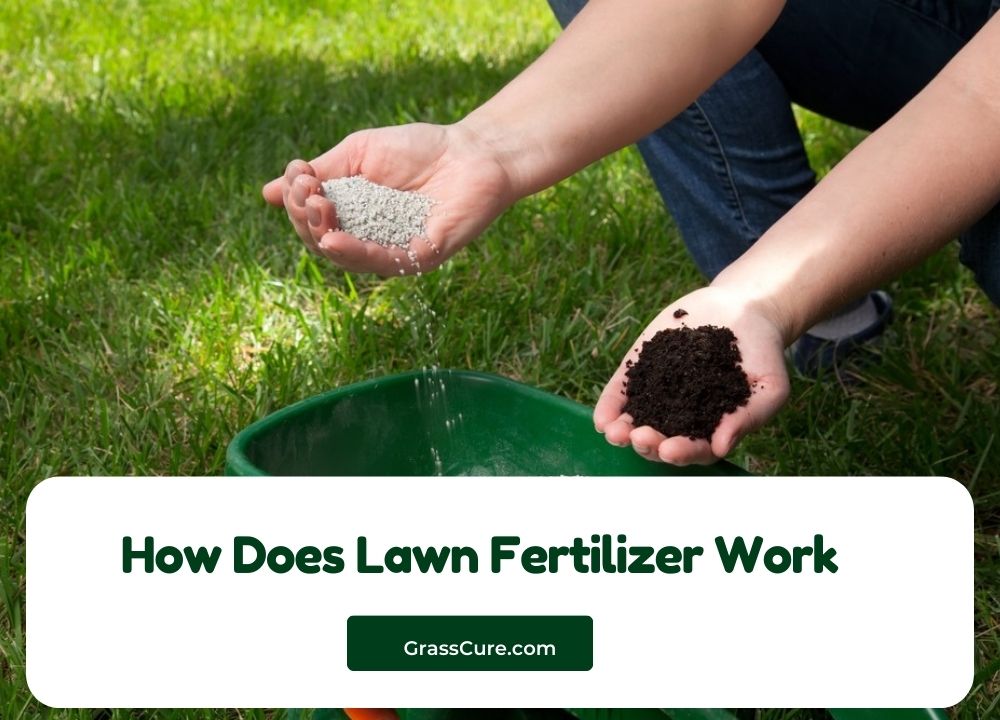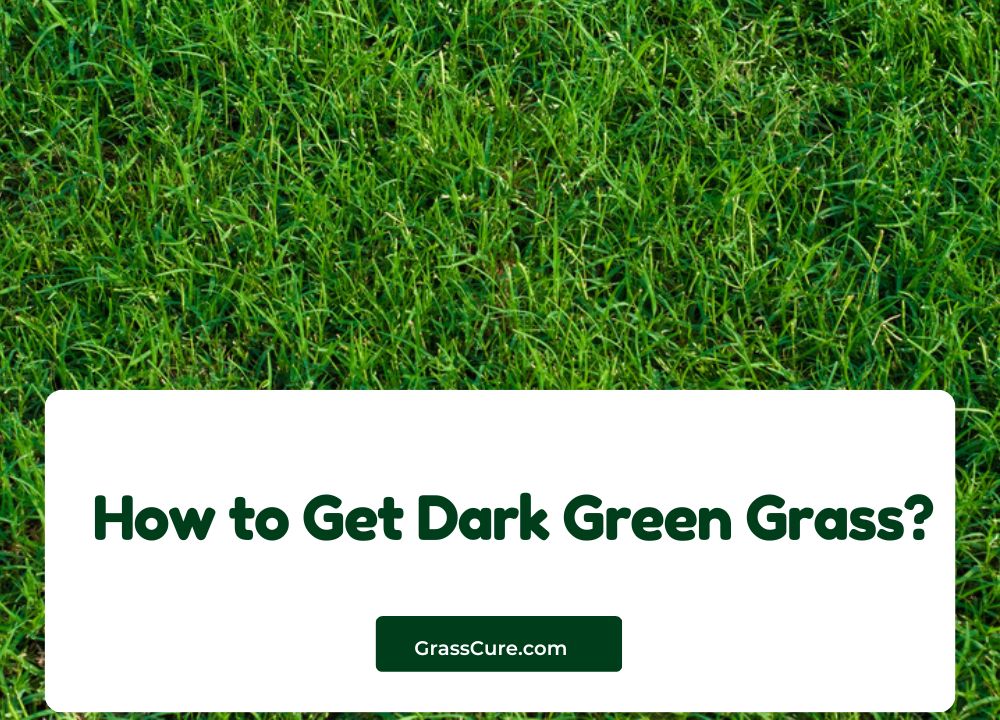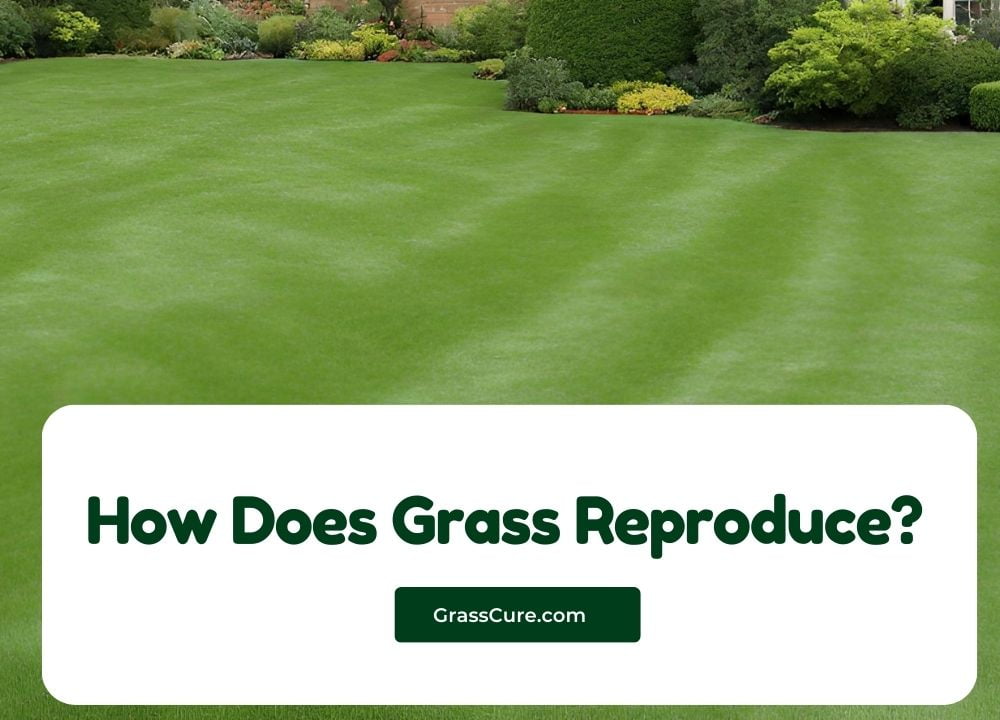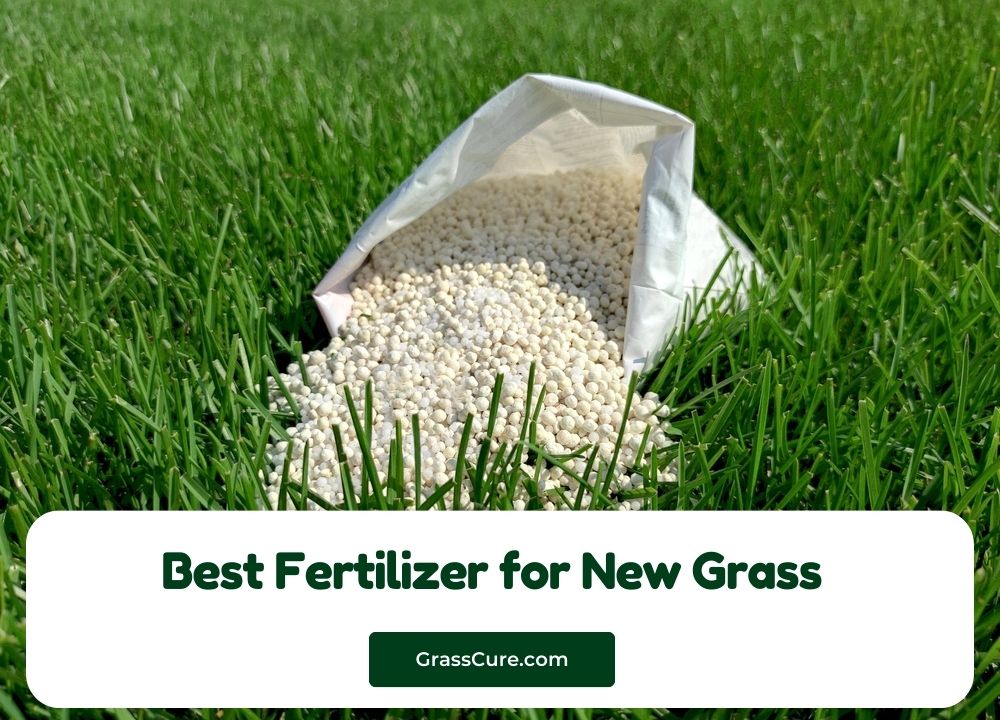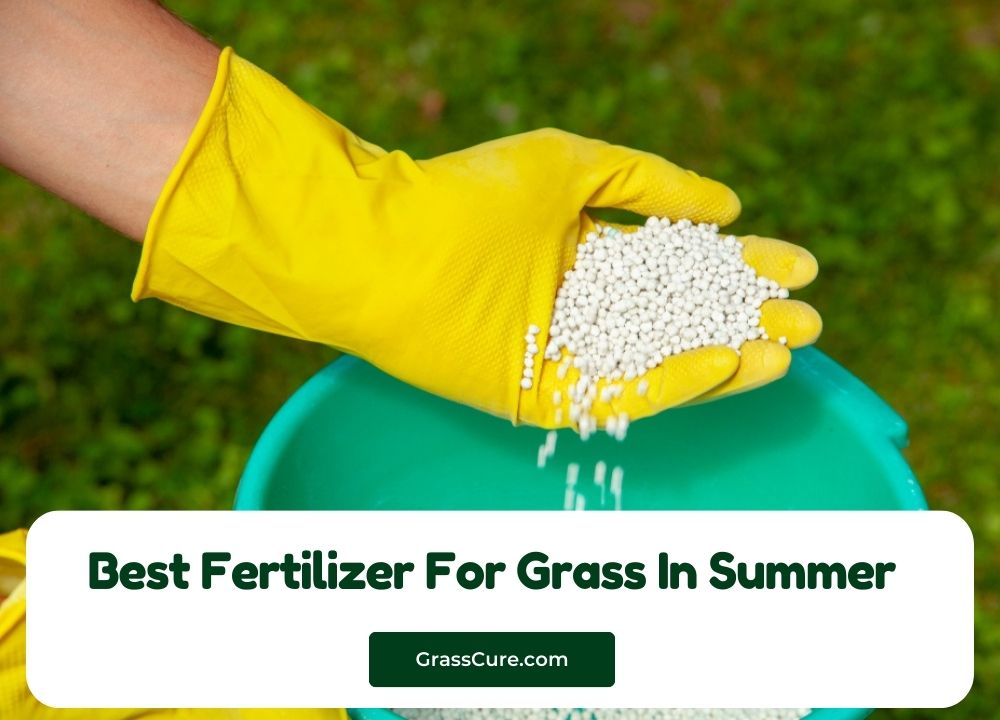A lush, vibrant lawn is a point of pride for many homeowners, providing a beautiful backdrop for family gatherings, outdoor activities, and relaxation. However, achieving that perfect green carpet requires more than just regular mowing and watering; it often hinges on the effective use of lawn fertilizers. Fertilizers play a crucial role in nourishing grass, supplying essential nutrients that promote healthy growth, enhance color, and strengthen root systems.
But how exactly do lawn fertilizers work? Understanding the science behind these products can empower homeowners to make informed choices that lead to a thriving lawn. In this post, we’ll explore the various types of fertilizers, the nutrients they provide, and how they interact with soil and grass to produce the lush landscapes we all desire. Whether you’re a seasoned gardener or a novice looking to improve your lawn care routine, this guide will help you unlock the secrets to effective fertilization and pave the way for a greener, healthier lawn.
How Does Lawn Fertilizer Work Step By Step Guide
The Science Behind Lawn Fertilizers
Lawn fertilizers are more than just a simple mix of chemicals; they are a carefully formulated blend of essential nutrients designed to support grass growth. To truly understand how lawn fertilizers work, it’s essential to explore the underlying science, including how nutrients are absorbed, the role of soil, and the different types of nutrient release.
Nutrient Absorption
When you apply fertilizer to your lawn, the grass absorbs nutrients primarily through its roots. Each nutrient serves a specific purpose:
- Nitrogen (N) promotes vigorous leaf growth and deep green color.
- Phosphorus (P) aids in root development and flowering.
- Potassium (K) strengthens the plant’s overall health, enhancing drought resistance and disease tolerance.
Once these nutrients are in the soil, they are dissolved in water and taken up by the grass roots through a process called osmosis. This process is crucial, as it allows grass to access the nutrients it needs for growth and vitality.
The Role of Soil
The quality of the soil plays a significant role in how effective lawn fertilizers can be. Soil is composed of various minerals, organic matter, and microorganisms that work together to create a living ecosystem. Healthy soil can store nutrients and make them available to grass, while poor soil may lock away essential nutrients, rendering them inaccessible.
Understanding your soil’s composition and pH level is vital. A soil pH between 6.0 and 7.0 is generally ideal for grass, as it allows for optimal nutrient availability. Soil testing can provide valuable insights into nutrient levels and help you choose the right fertilizer for your lawn’s specific needs.
Nutrient Release: Immediate vs. Slow-Release
Fertilizers come in different formulations, primarily categorized into immediate (quick-release) and slow-release types:
- Quick-release fertilizers provide a fast boost of nutrients, ideal for giving your lawn a quick green-up. However, they can be used up rapidly, necessitating frequent applications.
- Slow-release fertilizers, on the other hand, gradually release nutrients over time, ensuring a steady supply that aligns with the grass’s growth needs. This method reduces the risk of nutrient runoff and minimizes the likelihood of over-fertilizing, making it a popular choice for homeowners seeking a long-term solution.
By understanding these scientific principles, homeowners can make more informed decisions about when and how to fertilize their lawns, ensuring they provide the right nutrients at the right time for optimal growth.
Types of Nutrients in Lawn Fertilizers
Lawn fertilizers are formulated to provide essential nutrients that support healthy grass growth. The primary nutrients are often represented by the N-P-K ratio on fertilizer packaging, which stands for nitrogen (N), phosphorus (P), and potassium (K). Each of these macronutrients plays a crucial role in the overall health and vitality of your lawn. Let’s explore these key nutrients in detail:
A. Nitrogen (N)
Role: Nitrogen is perhaps the most important nutrient for promoting lush, green foliage. It is a key component of chlorophyll, the green pigment in plants that enables photosynthesis. Adequate nitrogen levels result in rapid leaf growth, increased blade density, and vibrant color.
Sources: Nitrogen can be found in both synthetic fertilizers (like ammonium nitrate and urea) and organic options (such as blood meal, fish emulsion, and compost). Each source has different release rates and may affect the soil differently.
Considerations: While nitrogen is essential, over-application can lead to excessive growth, making your lawn more susceptible to disease and pests. It can also contribute to environmental issues like nutrient runoff, which can harm local water bodies.
B. Phosphorus (P)
Role: Phosphorus is vital for root development, flower and seed production, and overall plant energy transfer. It helps establish strong root systems, which are essential for a lawn’s ability to absorb water and nutrients effectively.
Sources: Common sources of phosphorus include rock phosphate, bone meal, and various synthetic fertilizers that contain monoammonium phosphate (MAP) or diammonium phosphate (DAP).
Environmental Considerations: Due to its potential to contribute to algae blooms in water bodies, some regions have restricted the use of phosphorus fertilizers, particularly for established lawns. Conducting a soil test can help determine if phosphorus is needed.
C. Potassium (K)
Role: Potassium is crucial for overall plant health. It helps regulate water uptake, enhances drought resistance, and strengthens cell walls, making grass more resilient to stressors such as heat, cold, and diseases. It also plays a role in photosynthesis and nutrient transport within the plant.
Sources: Potassium is typically found in fertilizers in the form of potassium chloride (muriate of potash) or potassium sulfate. Organic sources include wood ash and greensand.
Considerations: Adequate potassium levels can improve a lawn’s ability to withstand environmental stress and maintain color, especially during hot or dry conditions. However, like with nitrogen, excessive potassium can lead to imbalances in soil chemistry.
Micronutrients
In addition to the primary macronutrients, lawn fertilizers may also contain micronutrients such as iron, manganese, magnesium, and zinc. While these are required in smaller amounts, they play vital roles in various physiological processes, including chlorophyll production and enzyme function.
Understanding the specific nutrients in lawn fertilizers and their functions can help homeowners choose the right products and apply them effectively for optimal lawn health. By providing a balanced diet of essential nutrients, you can foster a thriving lawn that enhances your outdoor space.
How to Choose the Right Fertilizer for Your Lawn
Selecting the right fertilizer for your lawn is crucial for promoting healthy growth and maintaining a vibrant green color. With numerous options available, it can be overwhelming to determine which fertilizer best suits your needs. Here are some essential steps to help you make an informed choice:
1. Assess Your Soil Health
Before purchasing fertilizer, conduct a soil test to evaluate nutrient levels, pH, and soil composition. Soil testing kits are readily available at garden centers or through local extension services. Understanding your soil’s health will provide insight into which nutrients your lawn may be lacking and help you choose the right fertilizer.
2. Understand Grass Types
Different grass types have varying nutrient requirements. Warm-season grasses (like Bermuda and Zoysia) and cool-season grasses (such as Kentucky bluegrass and fescue) thrive under different conditions and nutrient levels. Familiarize yourself with the specific needs of your grass type to ensure you select a fertilizer that supports its growth.
3. Know the N-P-K Ratio
The N-P-K ratio on fertilizer packaging indicates the relative percentages of nitrogen (N), phosphorus (P), and potassium (K). Here’s how to interpret it:
- High Nitrogen (e.g., 30-0-10): Ideal for promoting lush green growth, especially during the spring.
- Balanced (e.g., 10-10-10): Provides an equal mix of all three nutrients, suitable for general lawn maintenance.
- High Potassium (e.g., 10-0-30): Beneficial for lawns needing stress resistance, especially in hot or dry conditions.
Choose a fertilizer with an N-P-K ratio that aligns with your lawn’s specific growth stage and nutrient needs.
4. Consider the Type of Fertilizer
Decide between organic and synthetic fertilizers based on your preferences and lawn care philosophy:
- Organic fertilizers (like compost, manure, or bone meal) improve soil structure and promote microbial activity, but they may take longer to show results.
- Synthetic fertilizers (such as ammonium nitrate or urea) provide quick nutrient availability and can be tailored to specific nutrient needs but may have environmental impacts if not used responsibly.
5. Timing and Seasonal Considerations
The timing of your fertilizer application is just as important as the type you choose. Generally, spring and fall are the best times for fertilizing your lawn. In spring, focus on promoting growth, while in fall, consider a fertilizer that enhances root development and prepares the lawn for winter.
6. Read Labels and Follow Instructions
Always read the labels and follow the manufacturer’s instructions for application rates and timing. Over-fertilization can lead to nutrient runoff and environmental damage, while under-fertilization may not provide the desired results.
7. Consult Local Experts
If you’re unsure which fertilizer is right for your lawn, don’t hesitate to consult local gardening centers or lawn care professionals. They can provide personalized recommendations based on your region’s climate, soil conditions, and grass types.
By following these steps and considering your lawn’s unique needs, you can confidently choose the right fertilizer to promote healthy growth and achieve the lush, green lawn of your dreams.
Application Techniques
Applying fertilizer correctly is crucial for maximizing its effectiveness and ensuring a healthy lawn. The right techniques can help you achieve an even distribution of nutrients, reduce the risk of over-fertilization, and promote strong grass growth. Here are some essential tips for applying lawn fertilizer:
1. Timing Your Application
The timing of your fertilizer application can significantly impact its effectiveness. Here are some general guidelines:
- Spring Application: For cool-season grasses, apply fertilizer in early spring as the grass begins to green up. This promotes vigorous growth after winter dormancy.
- Fall Application: Fertilizing in the fall helps strengthen roots and prepares the lawn for winter. This is particularly important for cool-season grasses.
- Summer Application: Warm-season grasses benefit from fertilizer applications in late spring and early summer. Avoid fertilizing during extreme heat, as this can stress the grass.
2. Choose the Right Equipment
Depending on the size of your lawn, you may need different tools for applying fertilizer:
- Broadcast Spreader: For larger lawns, a broadcast or rotary spreader provides even coverage. Adjust the spreader settings according to the fertilizer type and recommended application rate.
- Drop Spreader: For smaller areas or more precise applications (like along edges or flower beds), a drop spreader allows for greater control and minimizes overlapping.
- Liquid Fertilizer Sprayer: If using a liquid fertilizer, a hose-end sprayer can help distribute the solution evenly across your lawn.
3. Prepare Your Lawn
Before applying fertilizer, prepare your lawn by:
- Mowing: Mow your grass to the appropriate height before application. This allows for better nutrient absorption and reduces the risk of burning the grass.
- Watering: Water your lawn a day or two before applying fertilizer. Moist soil helps nutrients penetrate effectively and prevents grass from burning.
4. Apply Evenly
To ensure even distribution of fertilizer:
- Overlap Passes: When using a spreader, overlap each pass slightly to avoid striping or uneven coverage.
- Use Patterns: Consider using a crisscross pattern for application, especially if your lawn is large or irregularly shaped. This method ensures that no area is missed and helps to achieve uniform results.
5. Follow Application Rates
Always adhere to the recommended application rates provided on the fertilizer packaging. Over-fertilizing can lead to nutrient runoff, lawn burn, and environmental harm. A general rule of thumb is to start with a lower application rate, especially if you’re using a new product or have never fertilized before.
6. Water After Application
After applying fertilizer, it’s essential to water your lawn thoroughly. This helps to activate the nutrients and move them into the root zone, where they can be absorbed by the grass. If using a slow-release fertilizer, watering can also help to activate the release mechanism.
7. Monitor and Adjust
After fertilization, monitor your lawn’s response over the following weeks. Look for signs of healthy growth, such as vibrant color and increased density. If you notice issues like yellowing grass or uneven growth, consider consulting a lawn care professional to assess nutrient needs and make necessary adjustments.
By following these application techniques, you can maximize the benefits of lawn fertilizer and foster a thriving, beautiful lawn that you can enjoy throughout the seasons.
Common Mistakes to Avoid
Applying fertilizer can significantly enhance the health and appearance of your lawn, but there are several common mistakes that homeowners often make. Avoiding these pitfalls can help you achieve better results and promote a vibrant, lush lawn. Here are some key mistakes to watch out for:
1. Over-Fertilizing
One of the most frequent mistakes is applying too much fertilizer. Over-fertilizing can lead to:
- Lawn Burn: Excess nutrients can damage grass roots, resulting in brown, scorched patches.
- Nutrient Runoff: Excess fertilizer can wash away into storm drains or nearby water bodies, leading to environmental pollution and harmful algal blooms.
Tip: Always adhere to the recommended application rates on the fertilizer label and consider starting with a lower amount, especially if you’re new to fertilizing.
2. Ignoring Soil Testing
Failing to conduct a soil test before applying fertilizer is another common mistake. Without understanding your soil’s nutrient levels and pH, you may apply fertilizers that your lawn doesn’t need or that can exacerbate existing deficiencies.
Tip: Perform a soil test to determine the nutrient composition and pH of your soil. This information will help you choose the right type and amount of fertilizer for your lawn.
3. Fertilizing at the Wrong Time
Applying fertilizer at the wrong time can hinder its effectiveness. For example, fertilizing during extreme heat or drought can stress your grass and reduce nutrient uptake. Similarly, fertilizing too late in the fall can promote new growth that is vulnerable to winter damage.
Tip: Follow seasonal guidelines for your specific grass type, and avoid fertilizing during periods of heat stress or heavy rainfall.
4. Not Watering After Application
Neglecting to water your lawn after applying fertilizer can limit nutrient absorption. Fertilizers need moisture to dissolve and penetrate the soil, allowing grass roots to access the nutrients.
Tip: Water your lawn thoroughly after fertilization to activate the nutrients and help them reach the root zone. This is particularly important with slow-release fertilizers.
5. Using the Wrong Type of Fertilizer
Using a fertilizer that does not meet the specific needs of your grass type can lead to poor results. Different grass species require varying nutrient balances, and applying the wrong type can stunt growth or even harm your lawn.
Tip: Familiarize yourself with the nutrient requirements of your specific grass type and choose a fertilizer that aligns with those needs, as indicated by the N-P-K ratio.
6. Failing to Follow Up
After fertilization, some homeowners neglect to monitor their lawn’s response. Failing to evaluate how your lawn reacts to the fertilizer can prevent you from making necessary adjustments in the future.
Tip: Regularly assess your lawn’s health, and be prepared to adjust your fertilization approach based on its response. This may involve changing the type of fertilizer, the application rate, or the timing.
7. Skipping Maintenance Practices
Fertilizing should be part of a comprehensive lawn care routine that includes regular mowing, aeration, and watering. Focusing solely on fertilization without other maintenance practices can lead to suboptimal results.
Tip: Incorporate other lawn care practices into your routine to enhance overall health. Regular mowing, aeration, and proper watering will support the benefits of fertilization.
By avoiding these common mistakes, you can maximize the effectiveness of your lawn care efforts, promote healthy growth, and enjoy a beautiful, thriving lawn throughout the seasons.
Conclusion
Understanding how lawn fertilizers work and selecting the right products is essential for anyone looking to maintain a healthy, vibrant lawn. From knowing the key nutrients and their roles to mastering application techniques and avoiding common mistakes, informed decisions can lead to impressive results.
By conducting soil tests, choosing fertilizers based on your grass type and growth stage, and applying them correctly, you can provide your lawn with the nutrients it needs to thrive. Remember that responsible fertilization not only benefits your grass but also contributes to the health of the environment by minimizing runoff and promoting sustainable practices.
As you embark on your lawn care journey, keep these principles in mind. With a little knowledge and care, you can transform your outdoor space into a lush green oasis that enhances your home and provides enjoyment for years to come. Don’t hesitate to share your experiences or ask questions in the comments below—happy gardening!
Additional Resources
To further enhance your understanding of lawn care and fertilizer application, here are some valuable resources:
- Soil Testing Services:
- Local agricultural extension services often provide soil testing kits and analysis to help you assess your soil’s nutrient levels and pH.
- Websites like Soil Test Kit offer kits for home use.
- Fertilizer Guides:
- The National Gardening Association provides comprehensive guides on various types of fertilizers and their application methods.
- Check out the University of Minnesota Extension for specific recommendations on fertilizing lawns.
- Lawn Care Blogs and Websites:
- The Lawn Care Nut offers tips, tricks, and product recommendations for achieving a healthy lawn.
- LawnSite is a community forum where you can connect with other lawn care enthusiasts and professionals.
- Books on Lawn Care:
- “The Lawn Bible: How to Keep It Green, Groomed, and Growing All Year Round” by Jonathan Green offers in-depth insights into lawn maintenance and care.
- “Organic Lawn Care Manual: A Natural, Low-Maintenance System for a Beautiful, Safe Lawn” by Paul Tukey provides eco-friendly alternatives to traditional lawn care practices.
- YouTube Channels:
- “The Lawn Care Nut” offers video tutorials on fertilization, lawn care techniques, and product reviews.
- “GrowingWithJ.D.” focuses on practical lawn care tips, including fertilization methods and troubleshooting common lawn issues.
- Local Garden Centers and Nurseries:
- Many local garden centers and nurseries offer workshops and expert advice on lawn care and fertilization tailored to your region’s specific needs.
- Professional Lawn Care Services:
- If you prefer to leave the lawn care to the experts, consider hiring a professional lawn care service that can assess your lawn’s needs and provide tailored fertilization and maintenance plans.
